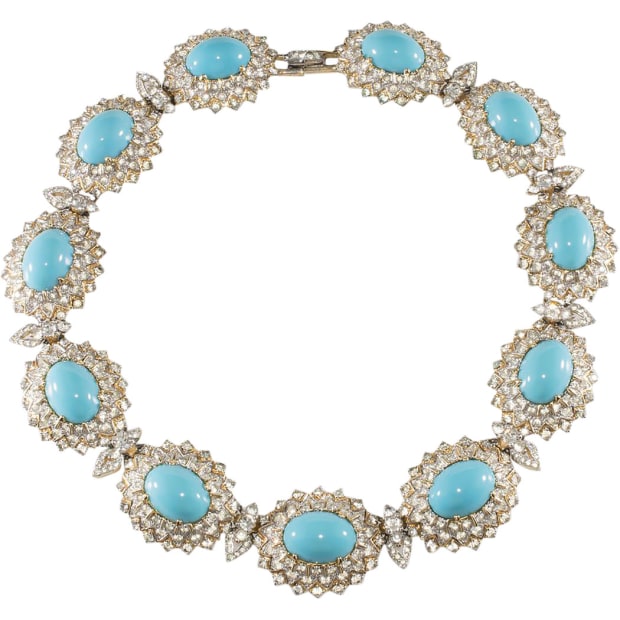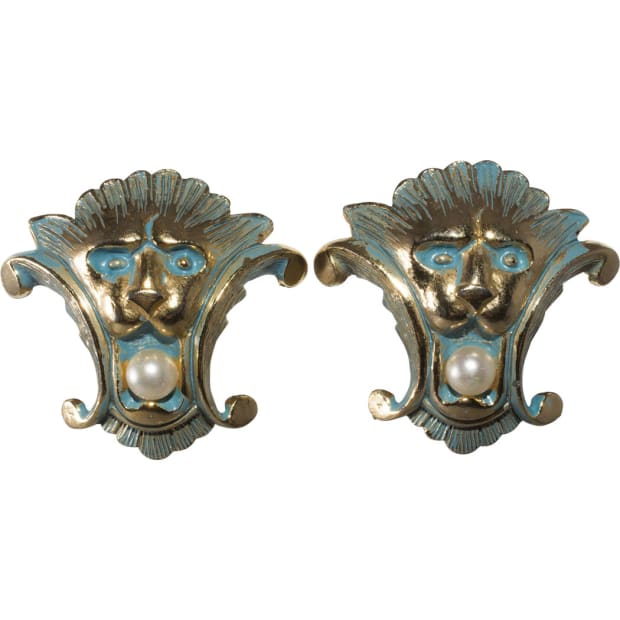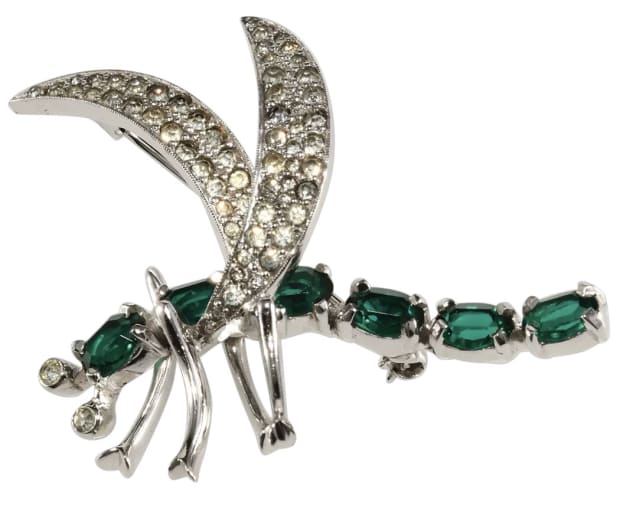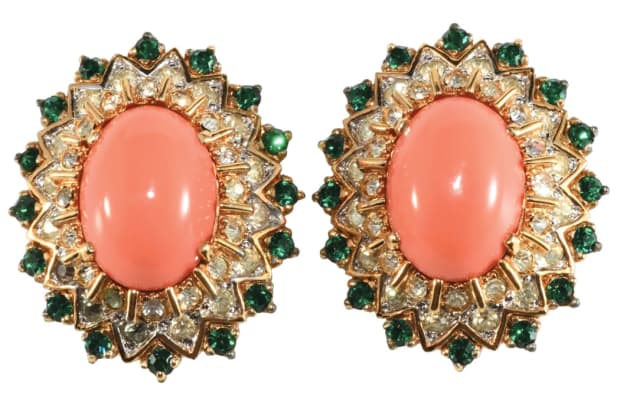#Sparkling #History #Jomaz #Costume #Jewelry
The jaw-dropping designs from Joseph Mazer remain as stylish today and sought after by collectors as when first introduced.
Mazer and Jomaz are both well-known names in the world of costume jewelry, and remarkable examples are found bearing each of these marks. Their histories are intertwined in terms of Joseph Mazer’s involvement in both businesses, but there’s more to the story. Learn about how Jomaz came about and some of the fabulous jewelry marketed by the company for more than three decades.
Courtesy Jay B. Siegel
Jomaz History
Joseph Mazer went into business with his brother, Louis, in 1923. Their company produced shoe buckles at first, and then began making costume jewelry later in the decade. Some say that move was made due to the apt urging of Marcel Boucher, who worked as a designer there from 1930 through 1937 before starting his own costume jewelry manufacturing company.
Some resources state that the name of the business eventually changed to Jomaz, but that’s not how things really panned out. The truth is that the brothers went their separate ways in the late 1940s. Louis Mazer continued to run the existing company. A new entity called Joseph J. Mazer & Co. was also established shortly thereafter with a partner named Paul A. Green, according to jewelry historian Barbara Schwartz on Trufauxjewels.com.
Women’s Wear Daily reported the Jomaz showroom opening in New York City in 1949. The business address was advertised as 15 West 36th Street in the early ’50s but changed to 29 West 36th St. later in the decade. According to several volumes of “The Standard Advertising Register,” Joseph Mazer served as president of the new firm and his son Lincoln was vice president.

Jay B. Siegel
The new company began using the mark Jomaz on their designs immediately and, on select pieces, Joseph Mazer was spelled out in full. A collaboration with the famed clothing designer Adolfo resulted in some pieces of jewelry branded Adolfo for Mazer late in the company’s history around 1980. Other trademarks were used in advertising campaigns and jewelry packaging that did not appear as marks on jewelry.
When Joseph Mazer died in the mid-1970s, Matthew Mazer took the helm. The company used the Jomaz trademark on jewelry through 1981, as noted by author Julia C. Carroll in her book Costume Jewelry 303.
Jomaz Jewelry Designs
When the business first began in the late 1940s and into the early 1950s, jewelry styles marked Jomaz were in the same vein as those made by Mazer. These designs often have colored rhinestones with clear accents set in rhodium plated metal imitating fine jewelry made with precious gemstones during the period.
Some pieces also incorporated molded glass leaves or flowers akin to what costume jewelry enthusiasts call “fruit salad” stones, which were first inspired by Cartier’s “Tutti Frutti” jewelry made during the 1930s. The stones of this nature in Jomaz jewelry are shaped differently than examples used by Mazer though.

Courtesy Jay B. Siegel
Using the registered tagline “jewels of the elite,” the firm advertised several lines in the late 1950s. Among them are pieces that incorporate genuine cultured pearls and clear rhinestones described as “brilliants.” Jewelry using molded glass stones were also described as “carved,” in ads of the period as well. This is just one example of how costume jewelry brands took a bit of license in elevating their products on occasion back in the day.
By the early 1960s, many Jomaz styles were much bolder and encompassed a broader color spectrum taking cues from fine jewelers like David Webb and Jean Schlumberger who was working for Tiffany & Co. by then. Large, colorful cabochons imitating coral and Persian turquoise along with faceted glass stones mimicking rubies, sapphires, and emeralds were incorporated into many designs crafted of gold-plated metal. One such India-inspired line was advertised as the “Maharanee” collection in 1960. Enameling in bright hues was also employed to decorate several styles that collectors covet today.
Some of the most popular Jomaz pieces are the jaw-dropping necklaces the company produced during the ‘60s. These sometimes imitate bold fine jewelry looks of the day but can mostly be categorized as fabulously fake. Wide cuff bracelets were made to match some of these necklaces. It’s a real boon for costume jewelry enthusiasts to find a complete set, also known as a parure when three or more pieces are in included. These sets are some of the costliest in the realm of collecting Jomaz jewelry.

Courtesy Jay B. Siegel
Those hoping to add more affordable Jomaz pieces to a budding costume jewelry collection look to smaller figural pieces. The jewelry from the 1970s marked Jomaz is also very nicely made, wearable, and inexpensive. And even the attractive Adolfo for Mazer pieces made around 1980 can be found reasonably priced although they don’t come on the market frequently.
Collecting Caveats
One thing to be aware of when collecting Jomaz jewelry is that the clear stones used in many pieces have yellowed or become dull as they have aged. Yellowed stones are usually the result of the original glues holding them in place discoloring over time. Darkened stones are described as being “dead” by collectors. These are common condition issues that do impact value so spend accordingly.
Many shoppers look for pieces needing minor repairs at bargain prices. That’s a good way to add some nice pieces to a cache of treasures without breaking the bank. However, keep in mind that those amazing leaf and flower shaped stones collectors love so much are very hard to replace. Finding a broken piece beyond repair that can be scavenged to make another one whole is your best bet, and that rarely comes to fruition.
You’ll also notice when browsing online that sellers often use the names Jomaz and Mazer in the same description. That’s a bit misleading since they were two separate companies. It could be a case of a seller being misinformed since several online resources erroneously state that Mazer was renamed Jomaz. It can also be a case of intentional keyword spamming. Nevertheless, asking how the piece is marked will let you know which company made it and help you date it a bit more accurately since Mazer jewelry was not produced after 1952.

Courtesy Jay B. Siegel
You May Also Like
How To Identify Unmarked Jewelry
How To Identify Juliana Jewelry

